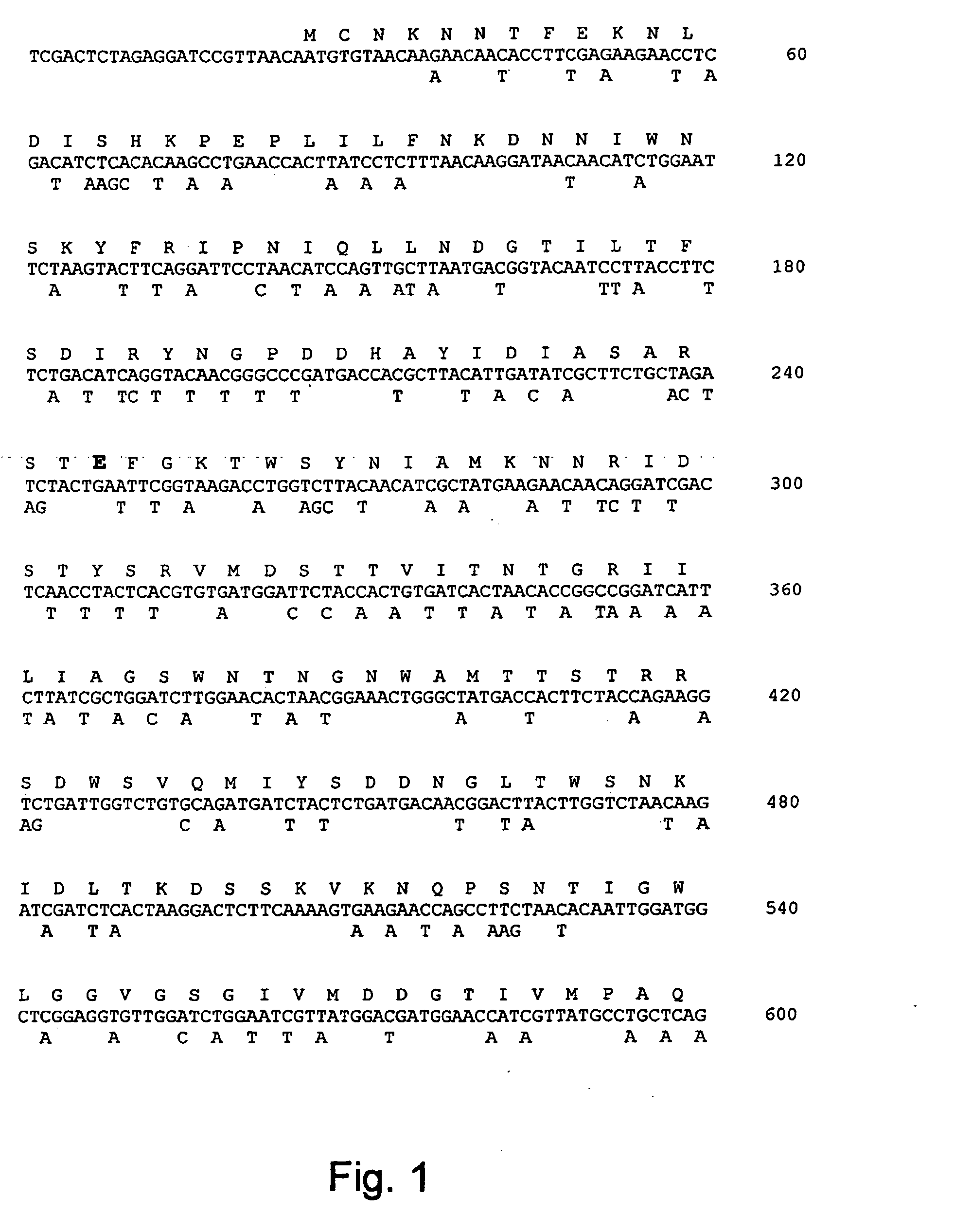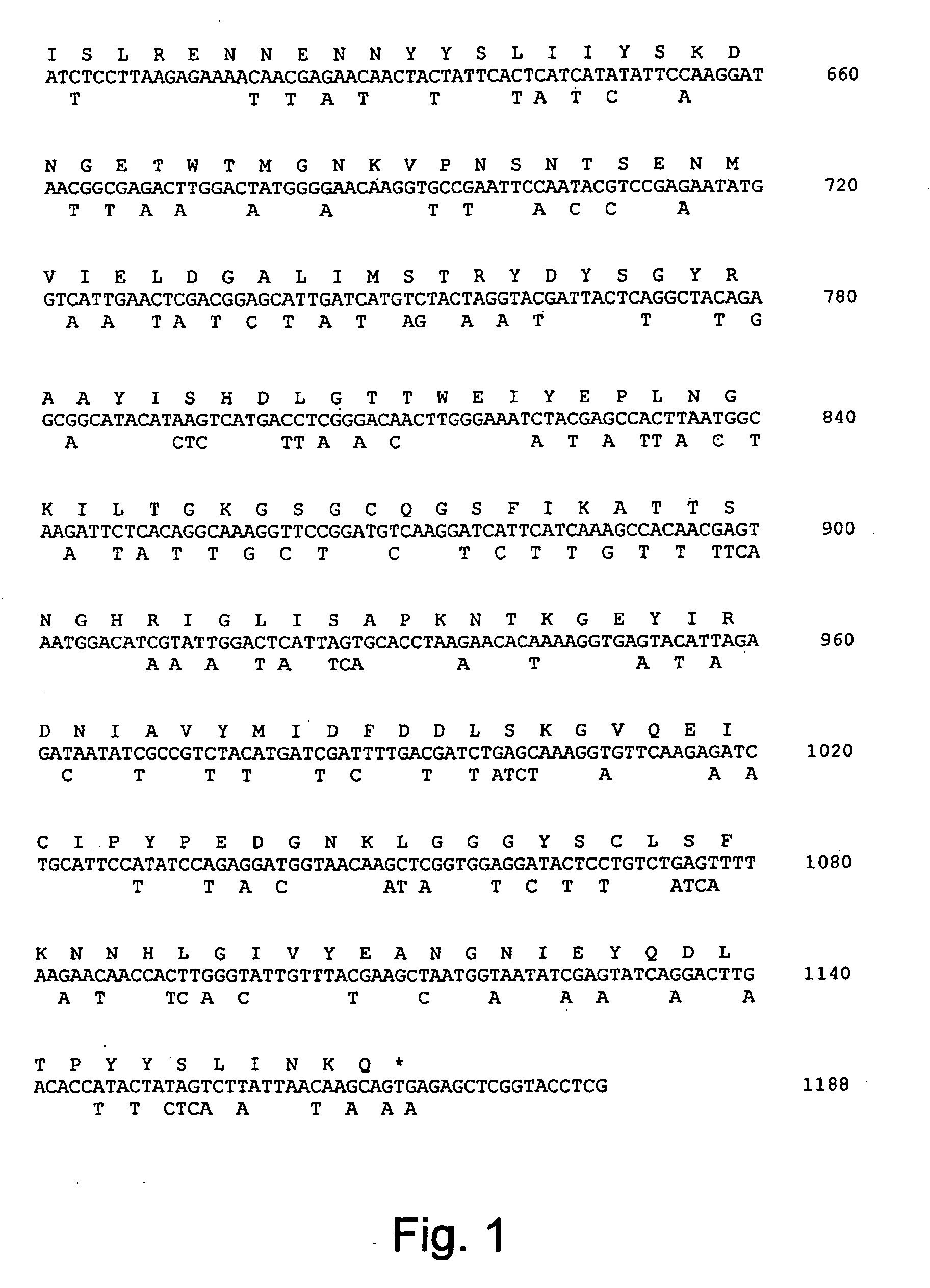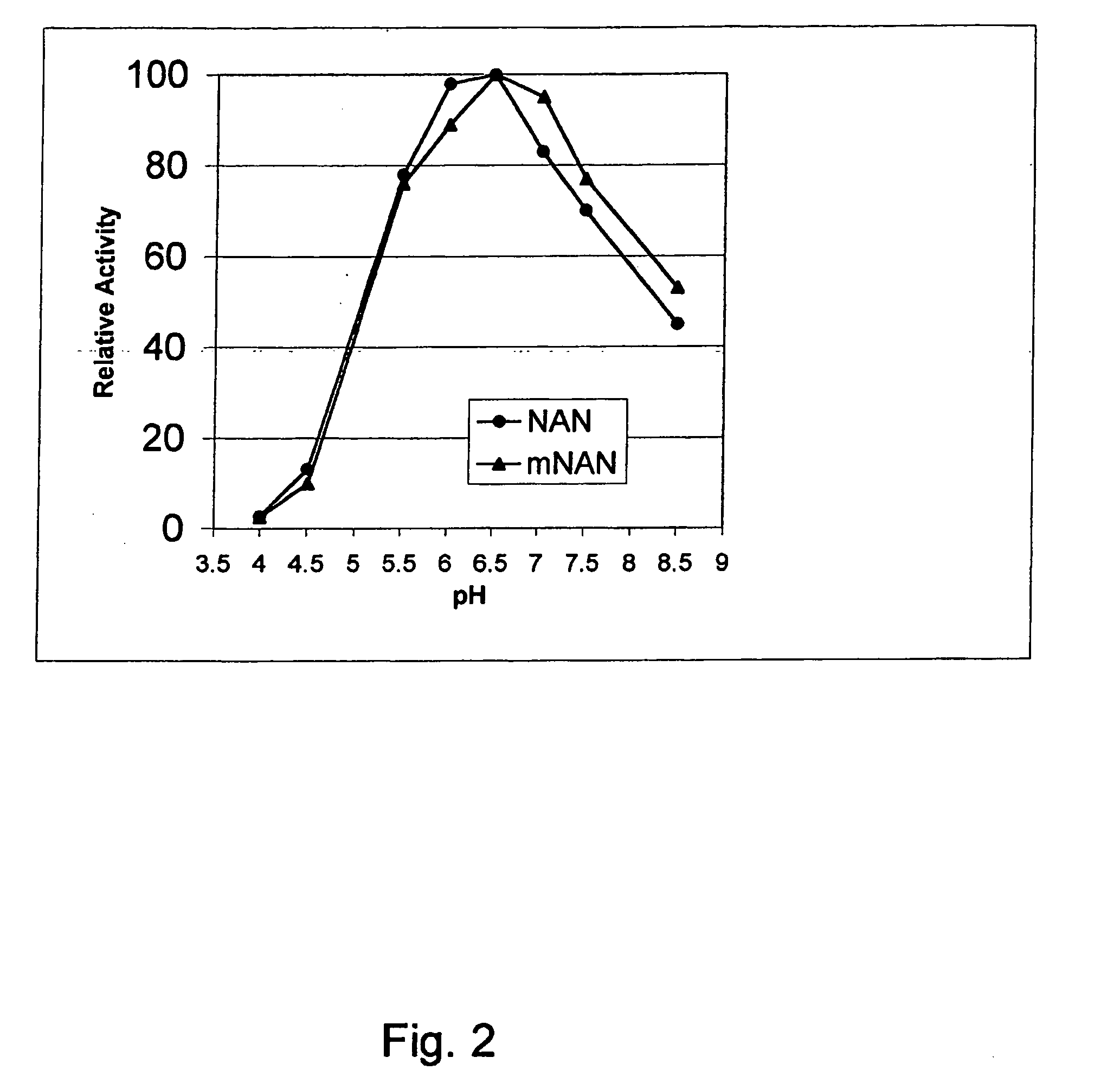Reporter gene
- Summary
- Abstract
- Description
- Claims
- Application Information
AI Technical Summary
Benefits of technology
Problems solved by technology
Method used
Image
Examples
Embodiment Construction
[0046] The present invention relates to a novel, alternative, highly sensitive reporter gene system that can be used alone or in combination with the GUS reporter gene or other reporter gene systems.
[0047] The invention will be more clearly understood from the following description thereof given by way of example only.
[0048] The invention relates to the total synthesis of a bacterial gene, the nucleotide sequence of which was modified to enable its use as a novel, highly sensitive reporter gene in plants and other organisms. The gene codes for a sialidase enzyme (syn: neuraminidase) similar to that encoded by the nanH gene of Clostridium perfringens (1). Sialidases have been identified in many animal lineages (Echinodermata through Mammalia) and in diverse microorganisms but they and their sialyl substrates, have not been found in plants. For this reason therefore, in principle, a gene encoding a sialidase activity ought to constitute (assuming it possesses the appropriate criteri...
PUM
| Property | Measurement | Unit |
|---|---|---|
| Biological properties | aaaaa | aaaaa |
Abstract
Description
Claims
Application Information
 Login to View More
Login to View More - R&D
- Intellectual Property
- Life Sciences
- Materials
- Tech Scout
- Unparalleled Data Quality
- Higher Quality Content
- 60% Fewer Hallucinations
Browse by: Latest US Patents, China's latest patents, Technical Efficacy Thesaurus, Application Domain, Technology Topic, Popular Technical Reports.
© 2025 PatSnap. All rights reserved.Legal|Privacy policy|Modern Slavery Act Transparency Statement|Sitemap|About US| Contact US: help@patsnap.com



